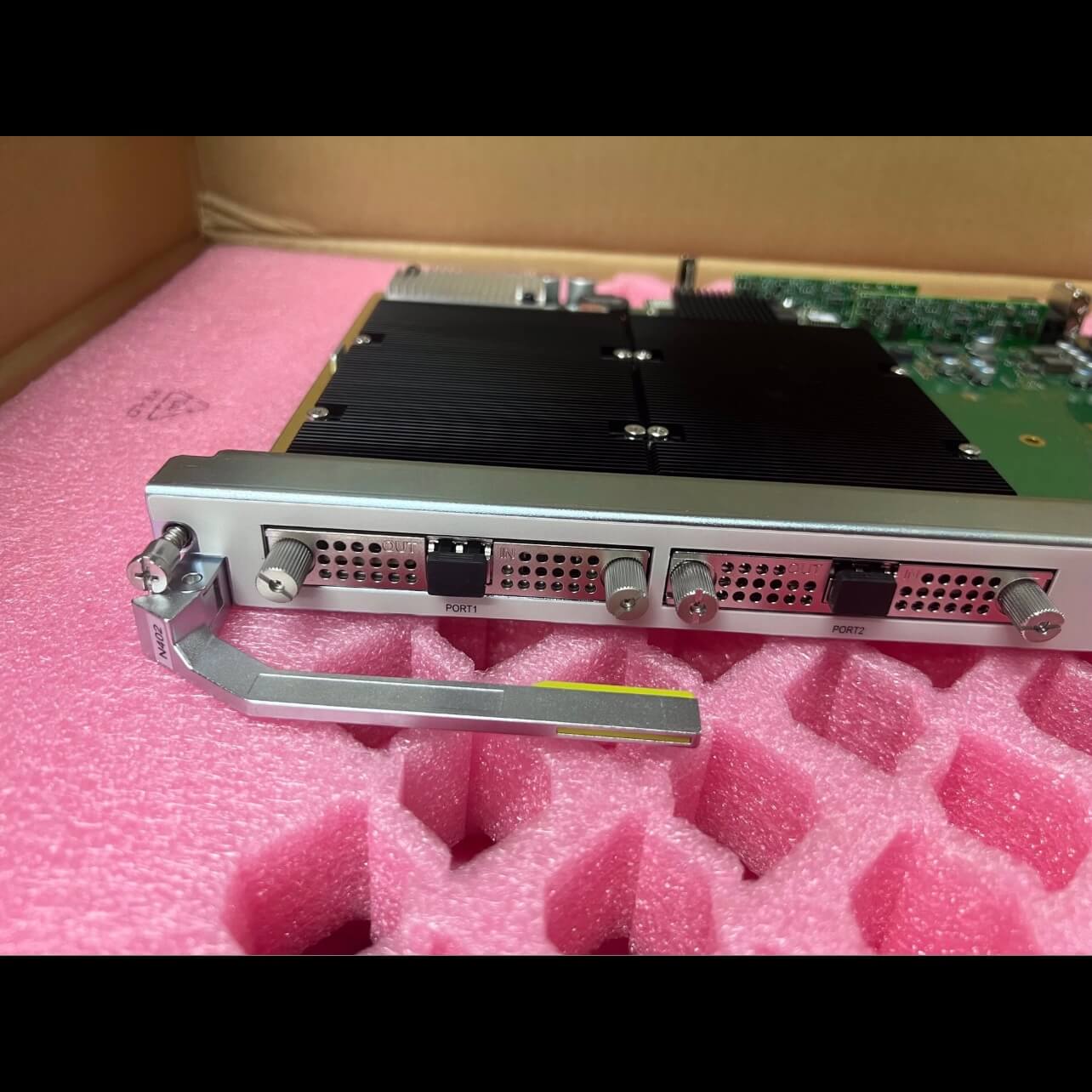Link You To Professional Networks

TNU1N402P Is Huawei OSN 9800 OTN Line Service Processing Board

Huawei OSN 9800 OTN Line Service Processing Board TNU1N402P Overview
TNU1N402P: 2*100G/200G or 1*400G programmable line service processing board
The N402P board is a programmable line board whose functions vary depending on the working mode of the port.
The N402P board can work in line or relay mode, and the working mode of the port can be flexibly adjusted. The N402P board uses coherent receiving technologies and applies to coherent systems.
There are indicators and interfaces on the front panel of the N402P board.
An N402P board consists of a WDM-side rate/modulation format tunable optical module, a signal processing module, a control and communication module, and a power module. The overall board function is the sum of functions provided by the two ports, and the function of each port varies depending on the port mode. Therefore, the following describes working principles and signal flows by port mode.
In addition to logical ports on the N402P board, this topic describes how the physical ports on the board are displayed on the NMS.
Functions and features of the TNU1N402P board
|
Function and Feature |
Description |
|
Backplane capacity |
400G line mode: The total backplane bandwidth is 400 Gbit/s. |
|
WDM specification |
Supports the DWDM specifications. |
|
Tunable wavelength |
Support tunable wavelength optical modules that provide for 96 wavelengths tunable in the extended C band with 50 GHz channel spacing. |
|
FEC coding |
|
|
Line modulation format |
|
|
Typical channel spacing |
NOTE: During the modulation format switching of the board, if the channel spacing increases, the modulation format switching fails, an error message indicating wavelength conflict is displayed, and the system prompts that the current channel spacing is too small to switch the modulation format. In this case, you need to change the channel spacing to a larger value before switching the modulation format. For example, modulation format A whose channel spacing is 50G can be directly switched to modulation format B whose channel spacing is 37.5G, but cannot be directly switched to modulation format C whose channel spacing is 75G. In this case, you need to change the channel spacing to a larger value first. Otherwise, the modulation format switching fails. |
|
OTN overhead protocol |
Supports the OTN frame format and overhead processing defined by ITU-T G.709. |
|
OTN overhead |
100G line mode:
200G line mode:
400G line mode:
|
|
Intra-board 1+1 protection |
Supported NOTE: Supports intra-board 1+1 protection when working with optical protection boards. Port in 400G mode: Do not support intra-board 1+1 protection. |
|
ODUk SNCP |
Supported |
|
Tributary SNCP |
Supported |
|
Electrical-layer ASON |
Supported |
|
Optical-layer ASON |
Supported NOTE:
|
|
Physical clock |
Supported NOTE: When the ODU cross-connect granularity of an OTN line port is set to the maximum granularity supported by the port, physical clock synchronization is not supported. The physical clock can be used only after lower-order ODU cross-connections are configured. |
|
IEEE 1588v2 |
Not supported |
|
Outband DCN |
Supports communication over ESCs. |
|
Test frame |
Not supported |
|
PRBS |
Supported on the WDM side. |
|
Latency measurement |
The board supports latency measurement in the WDM-side optical port direction (upstream direction).
|
|
Channel loopback |
|
|
Port loopback |
Supports WDM Side Loopback |
|
Alarm and performance event monitoring |
|


